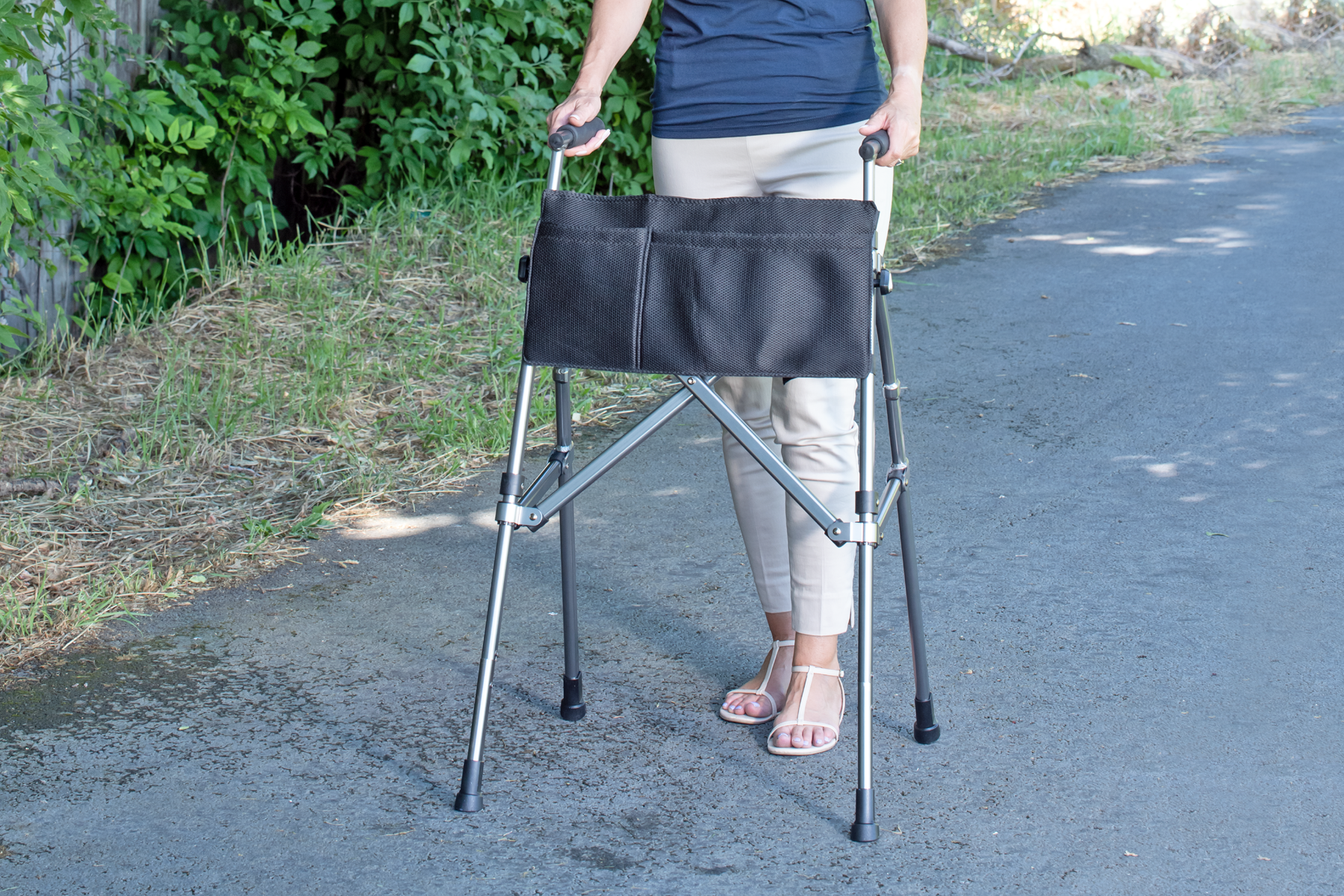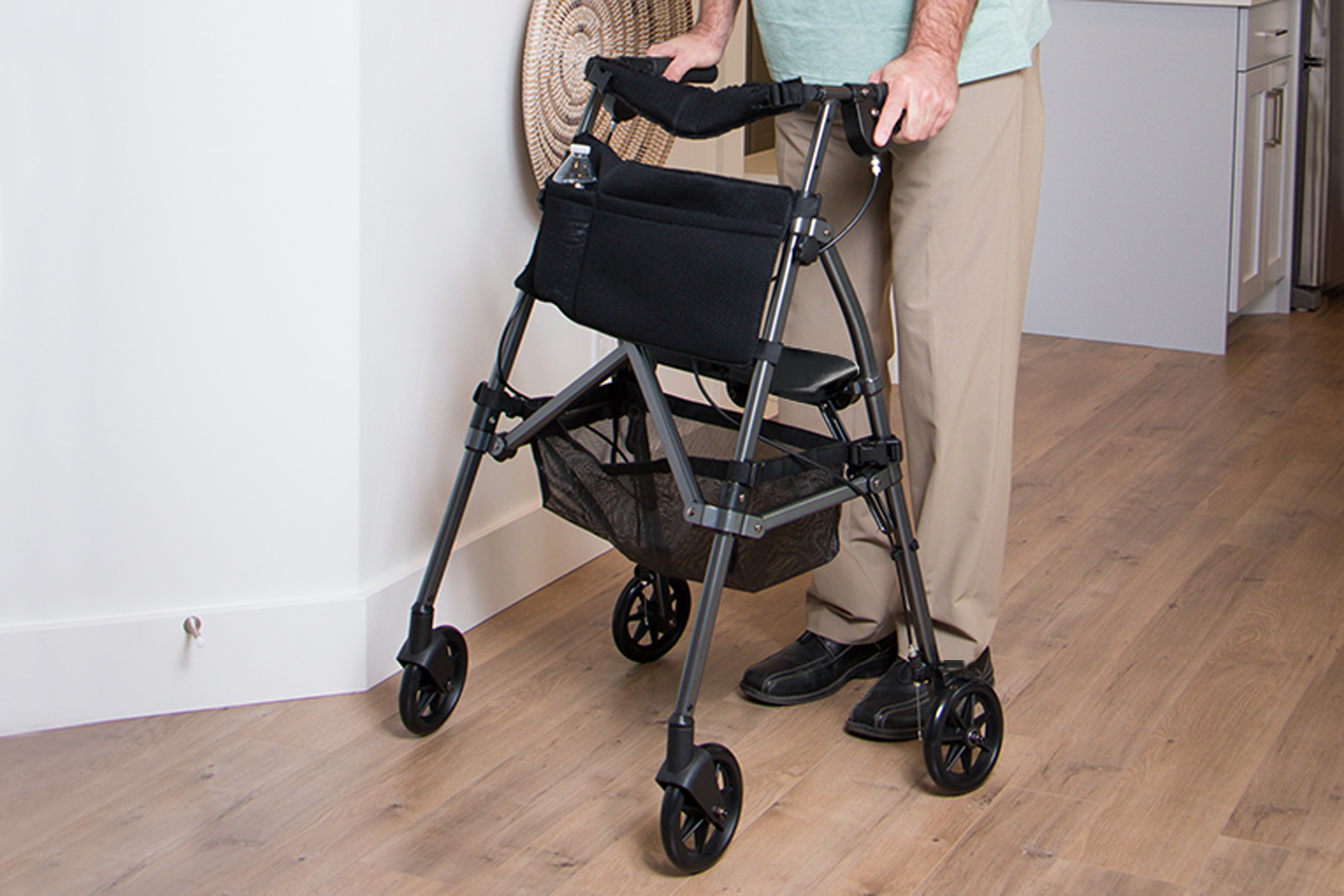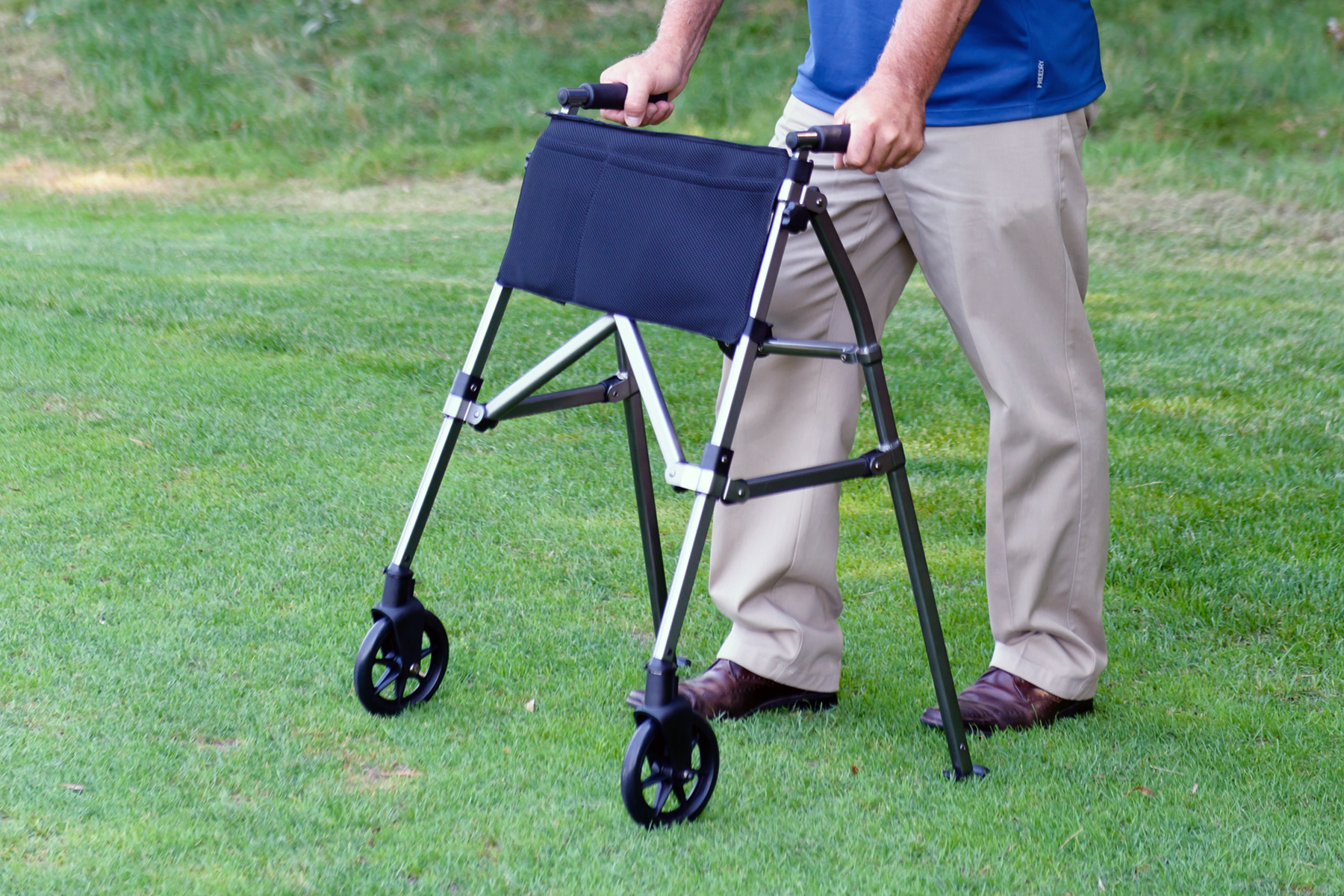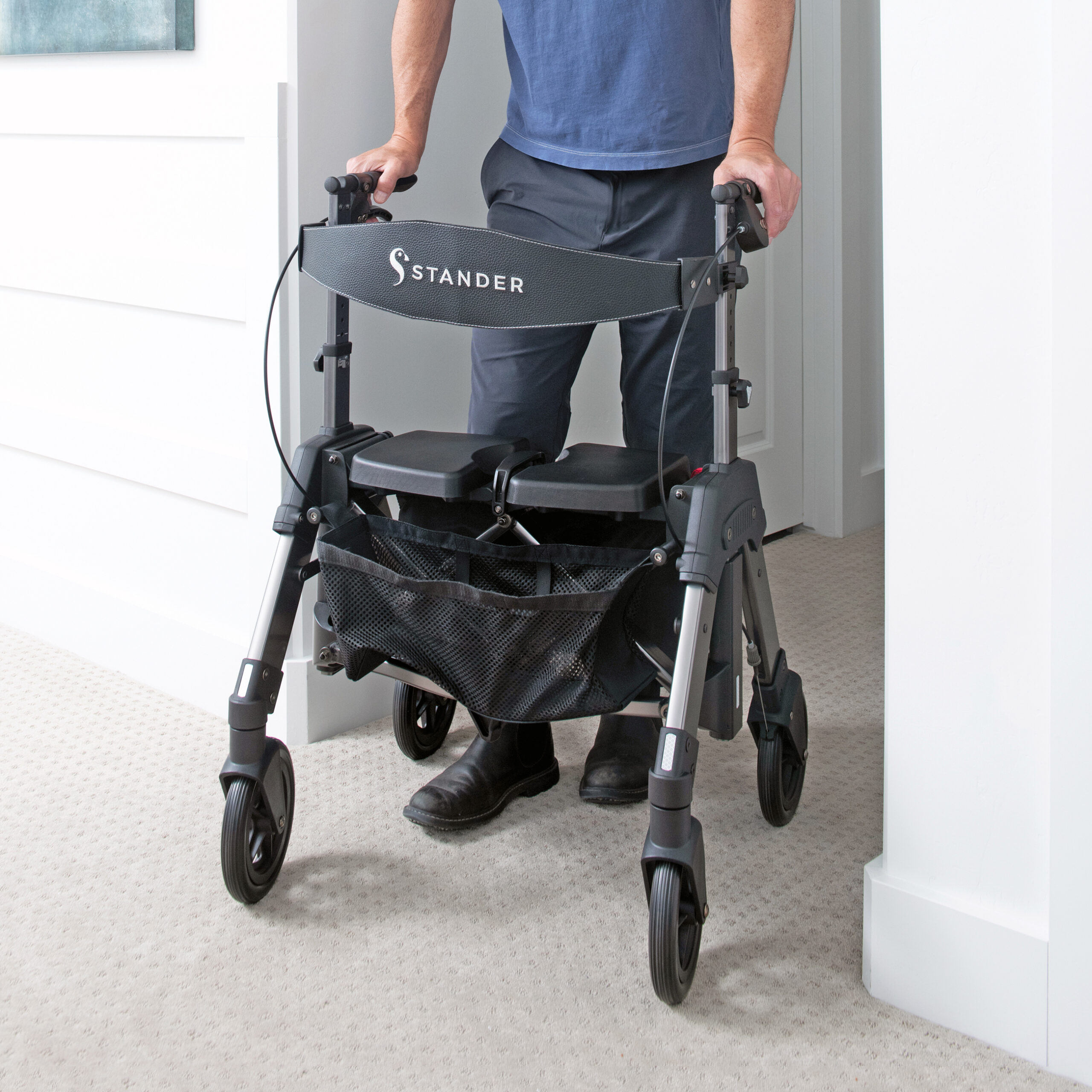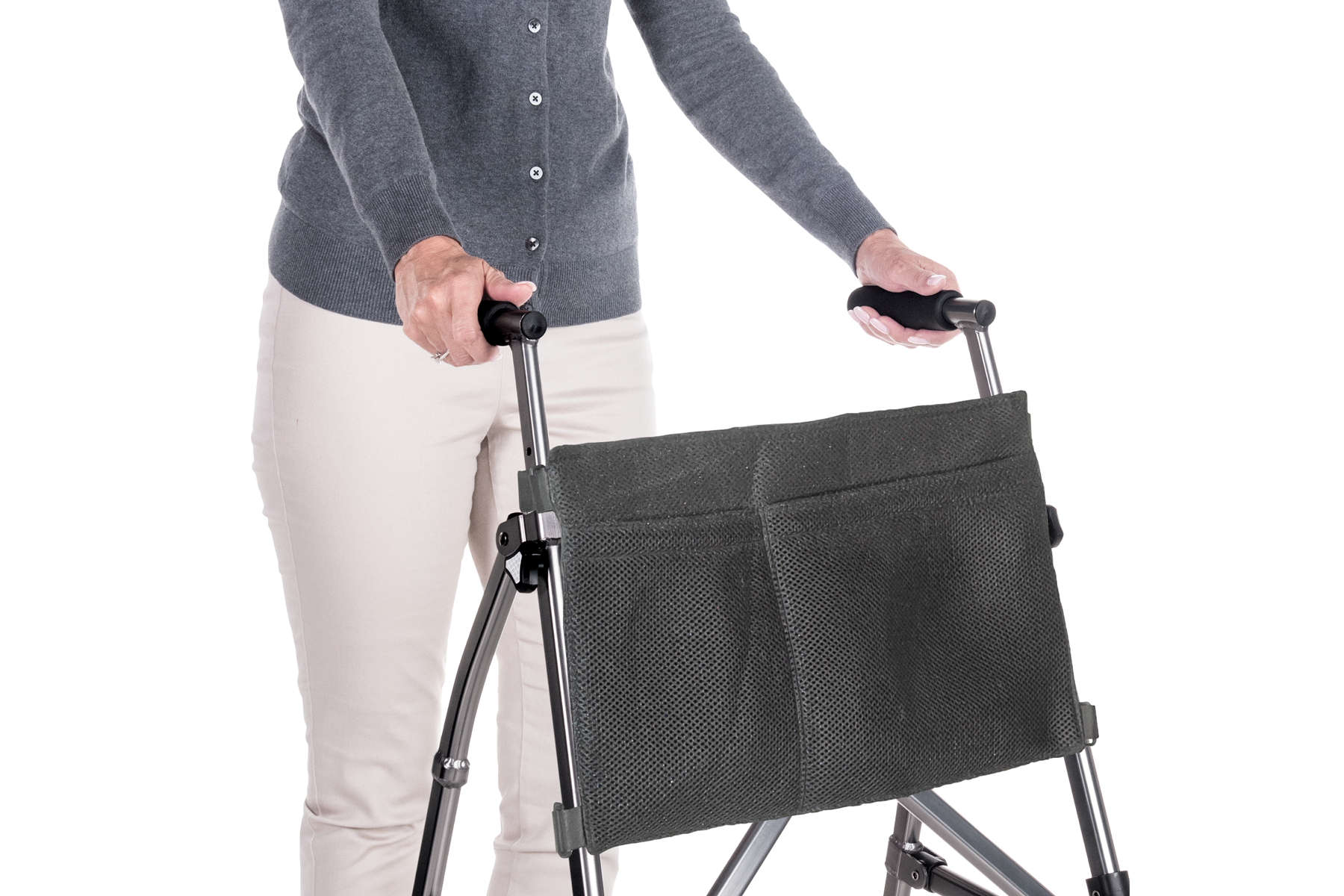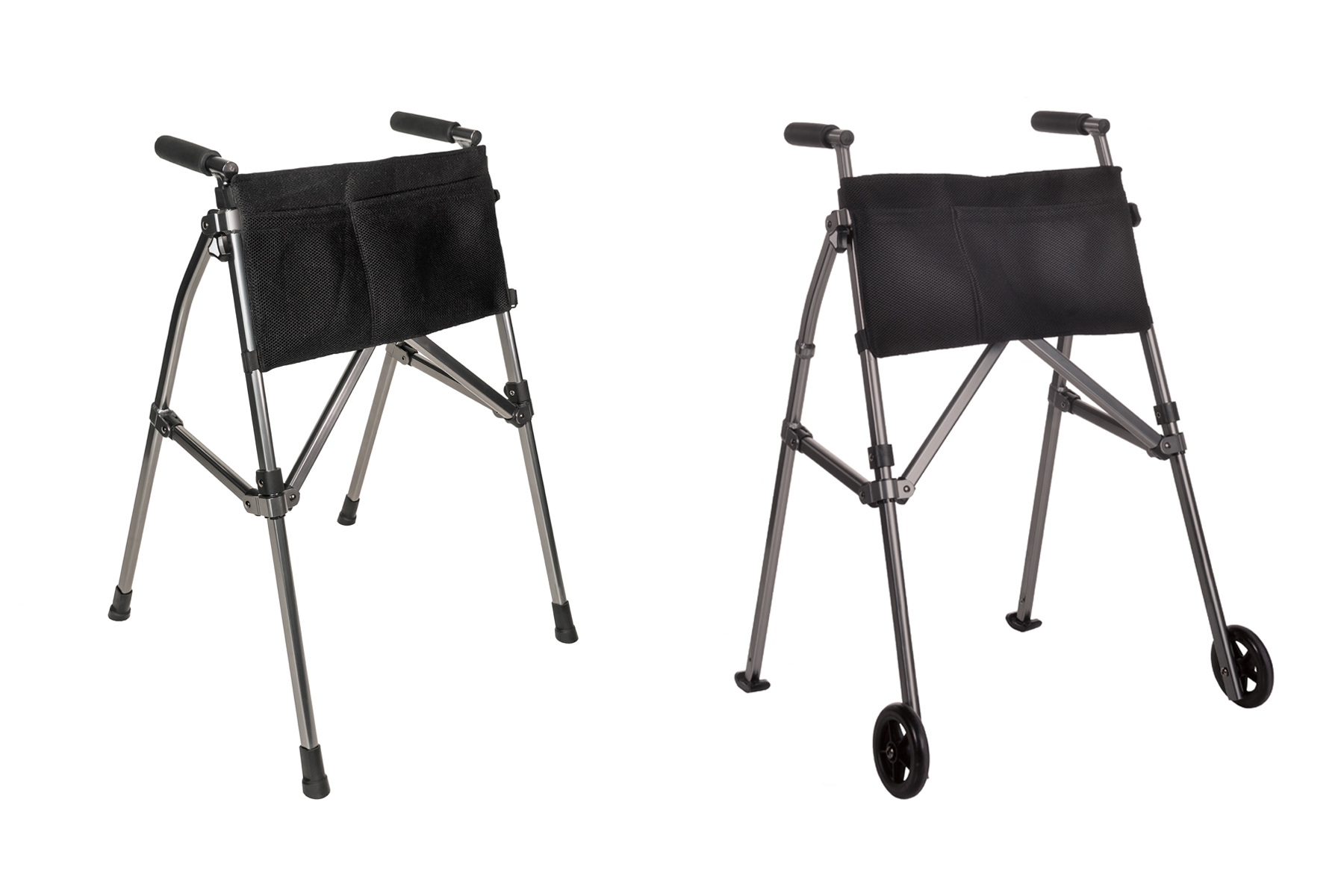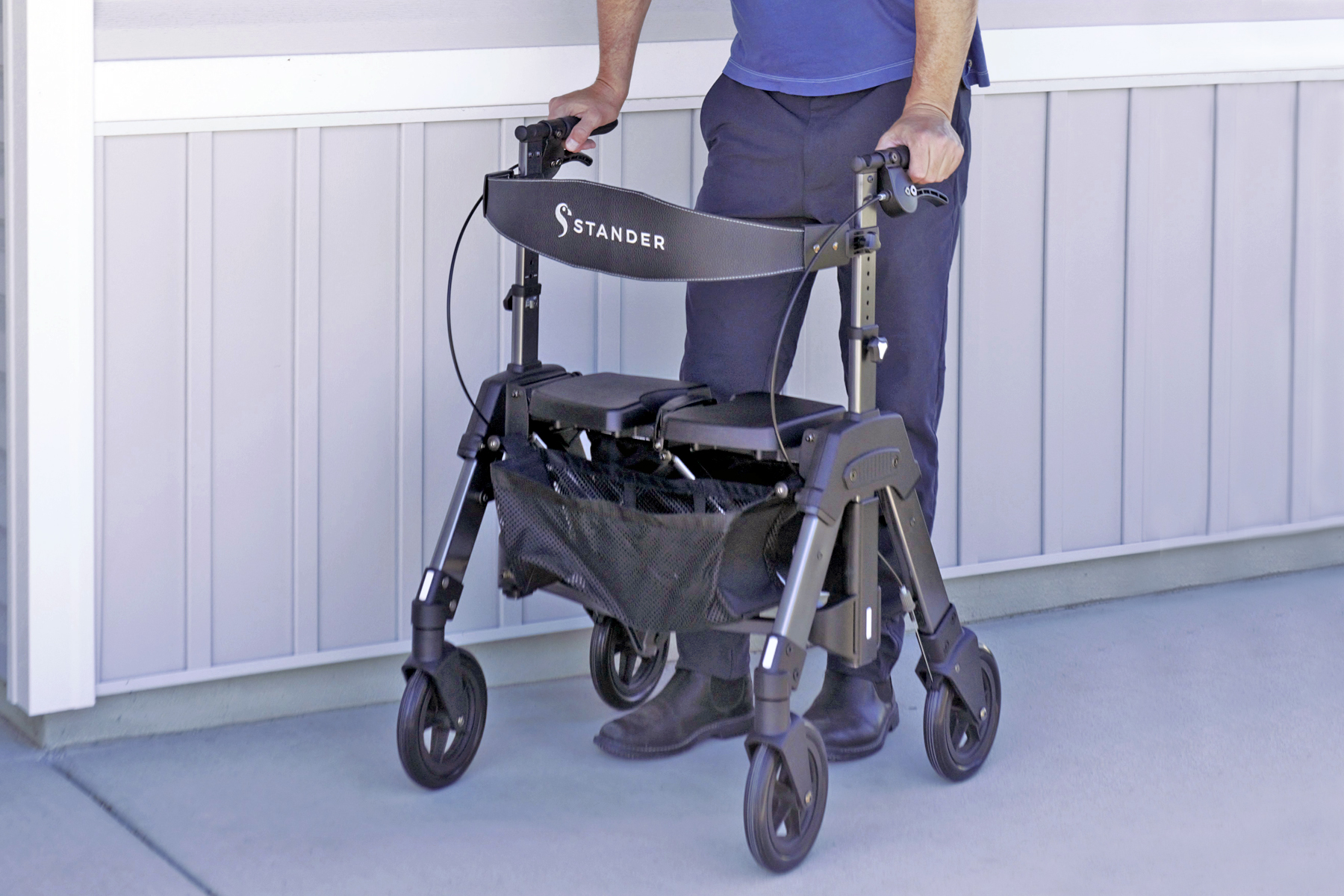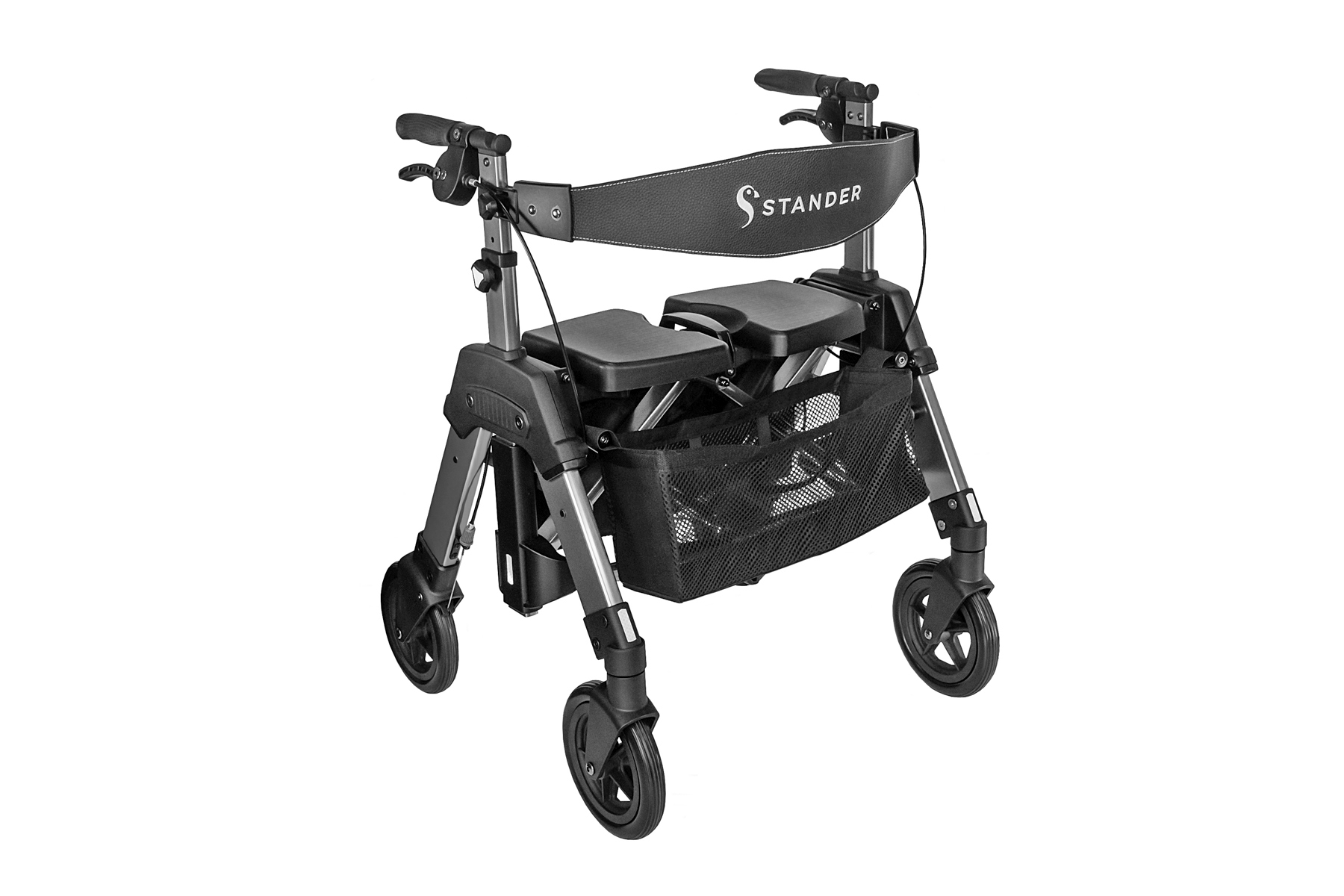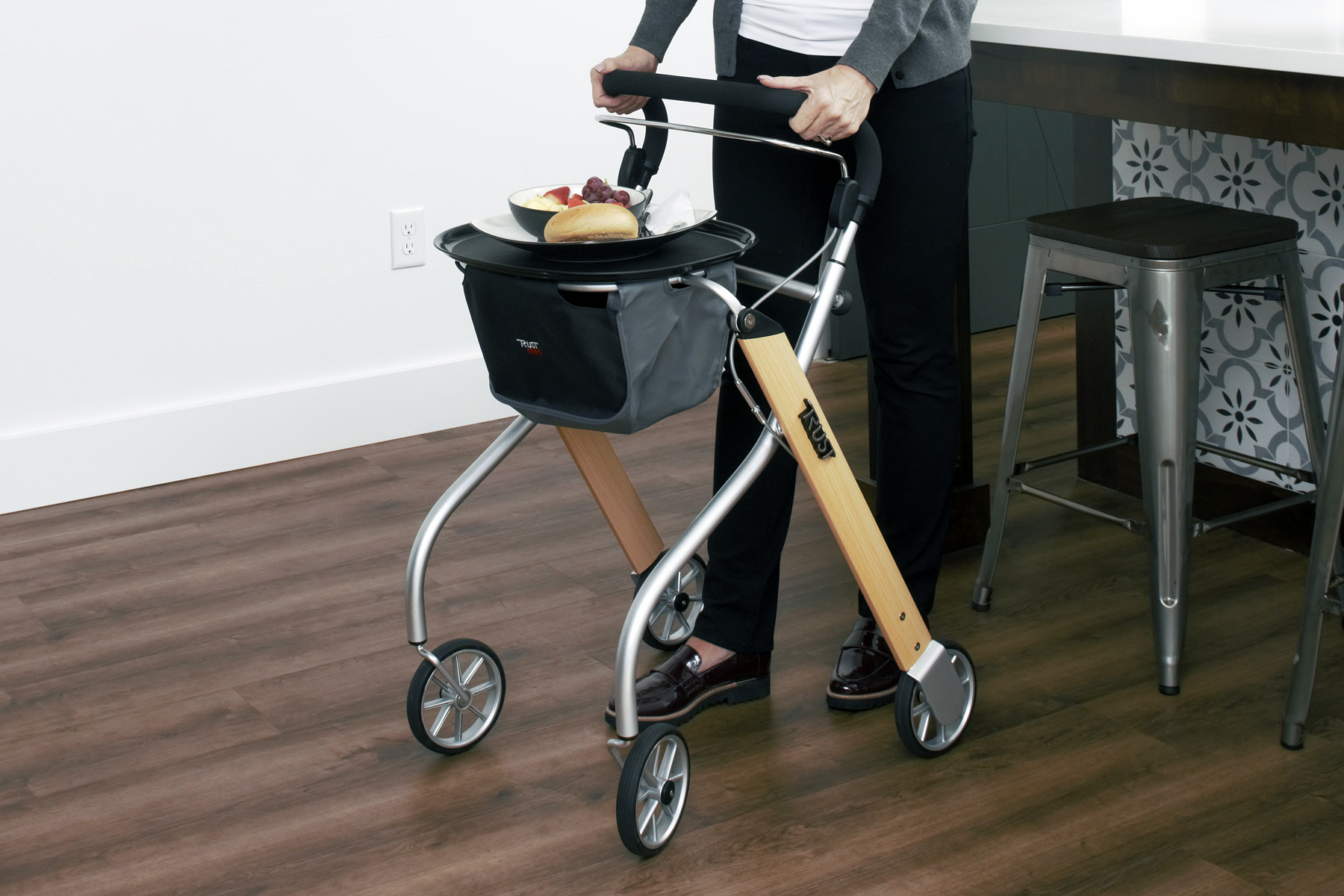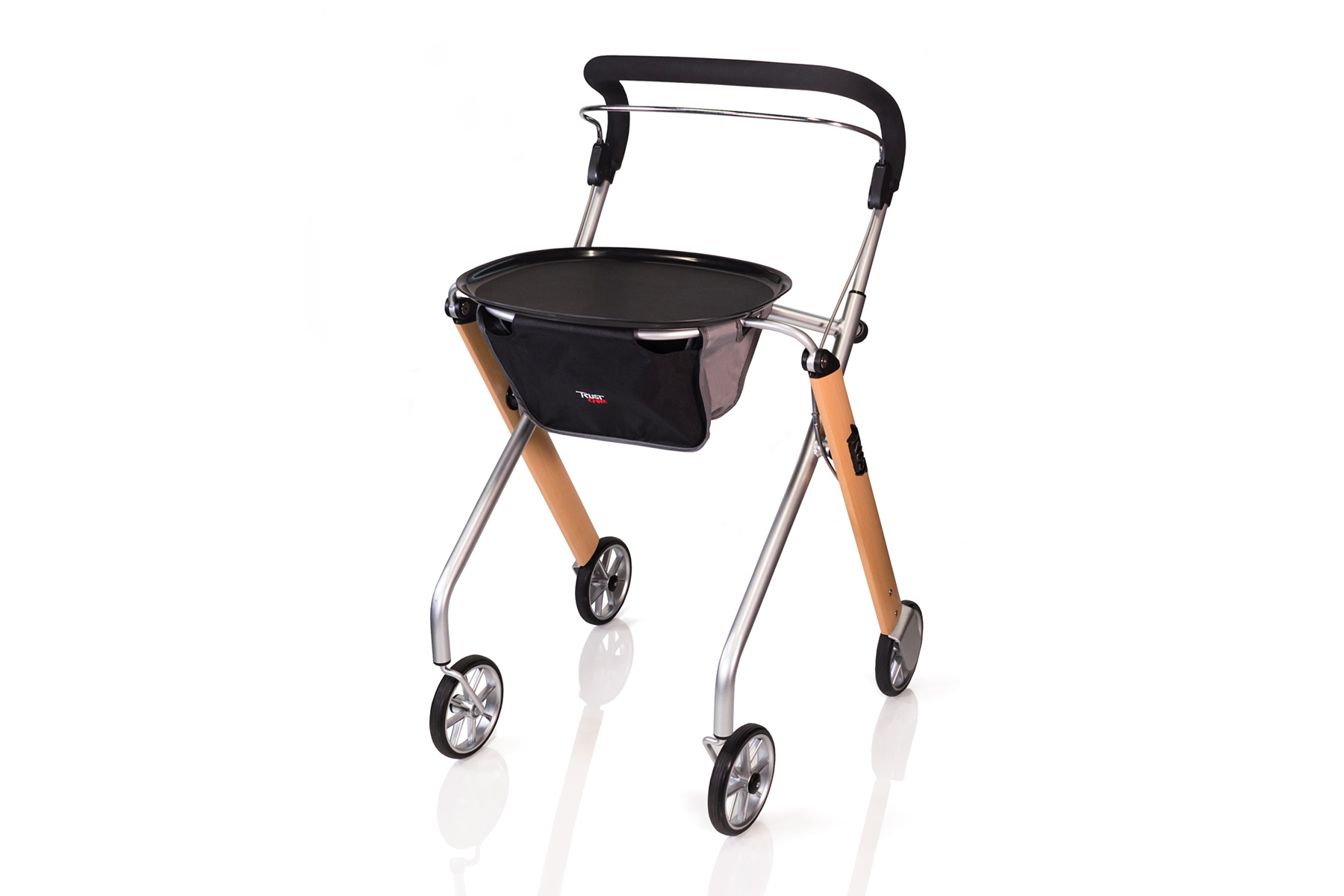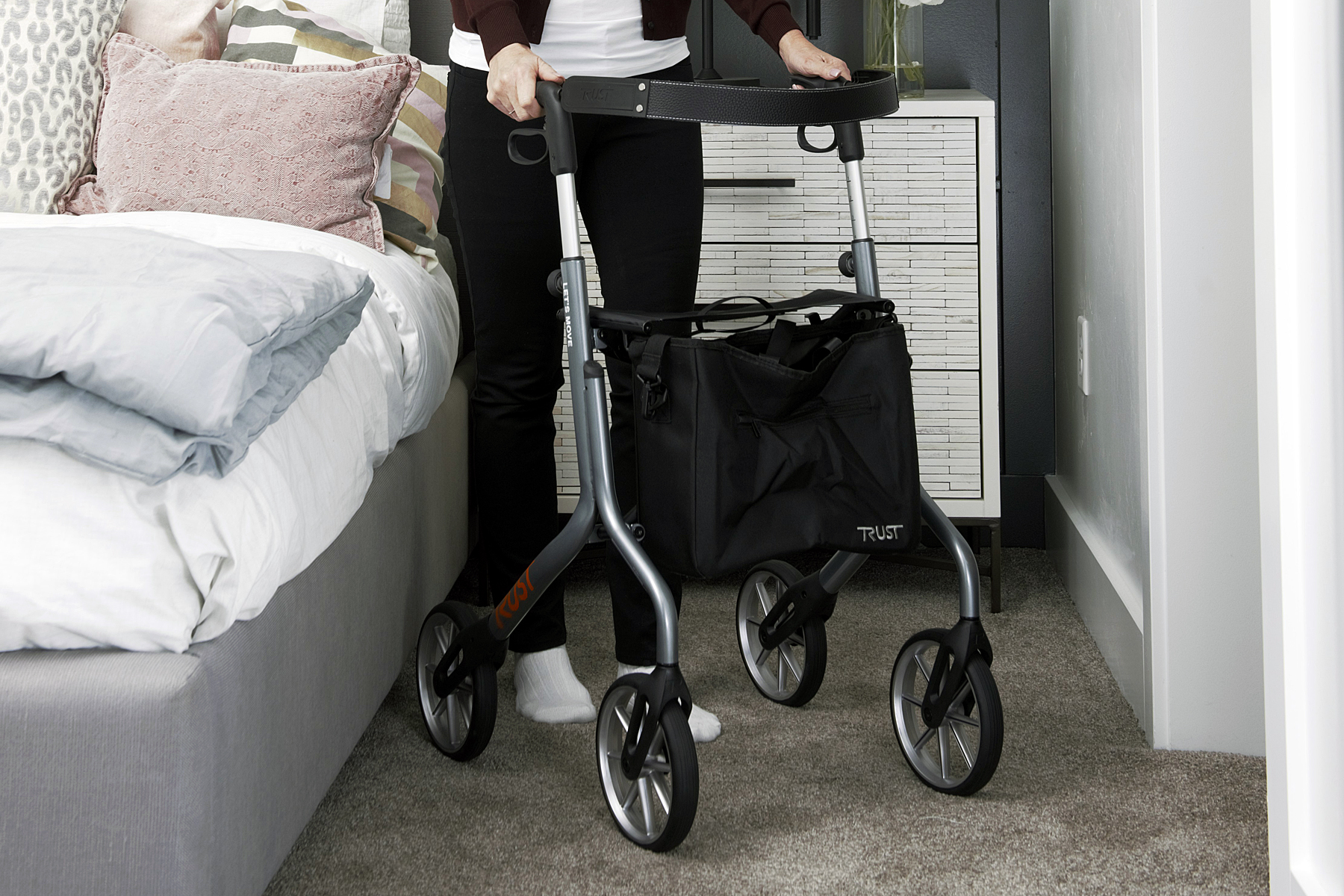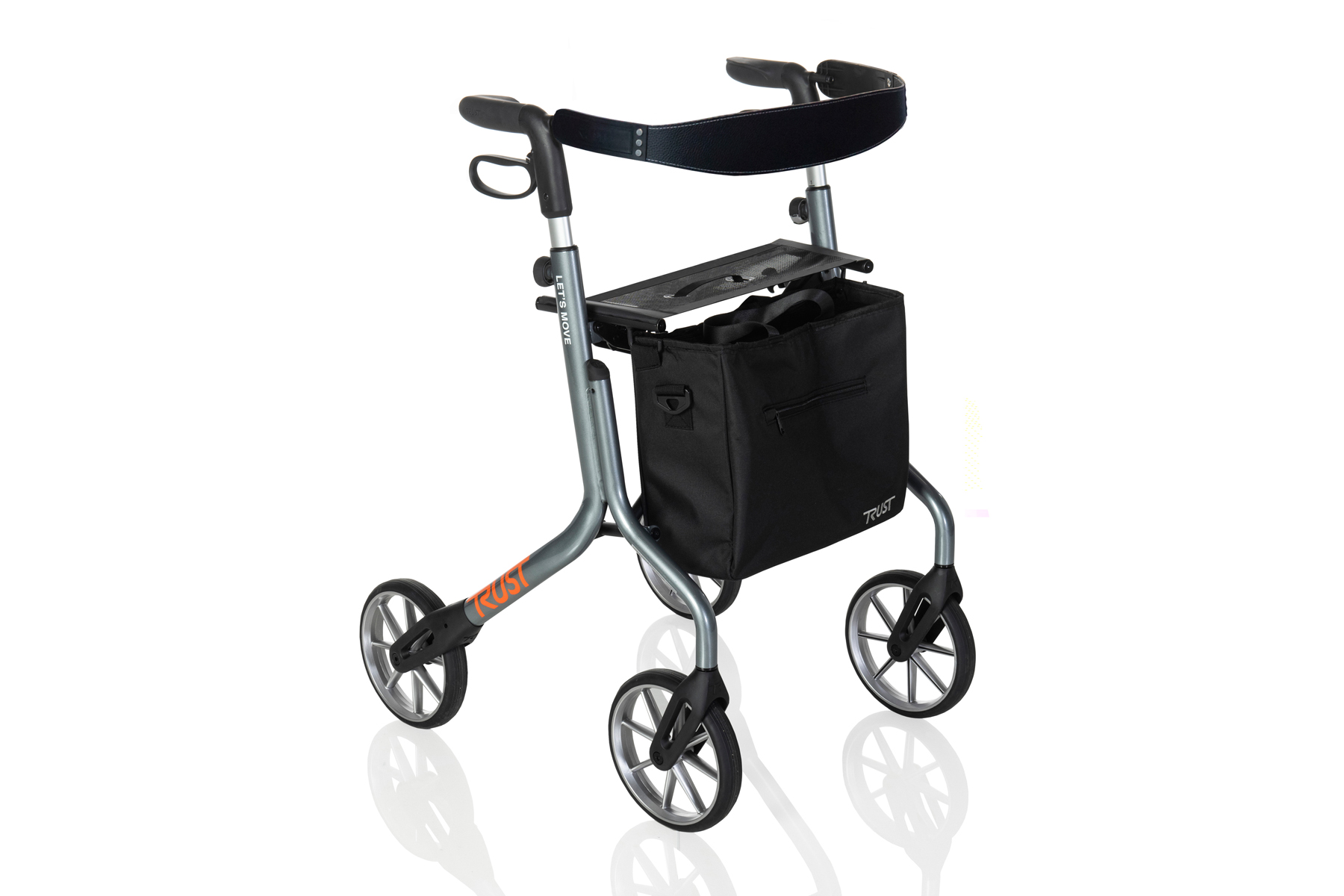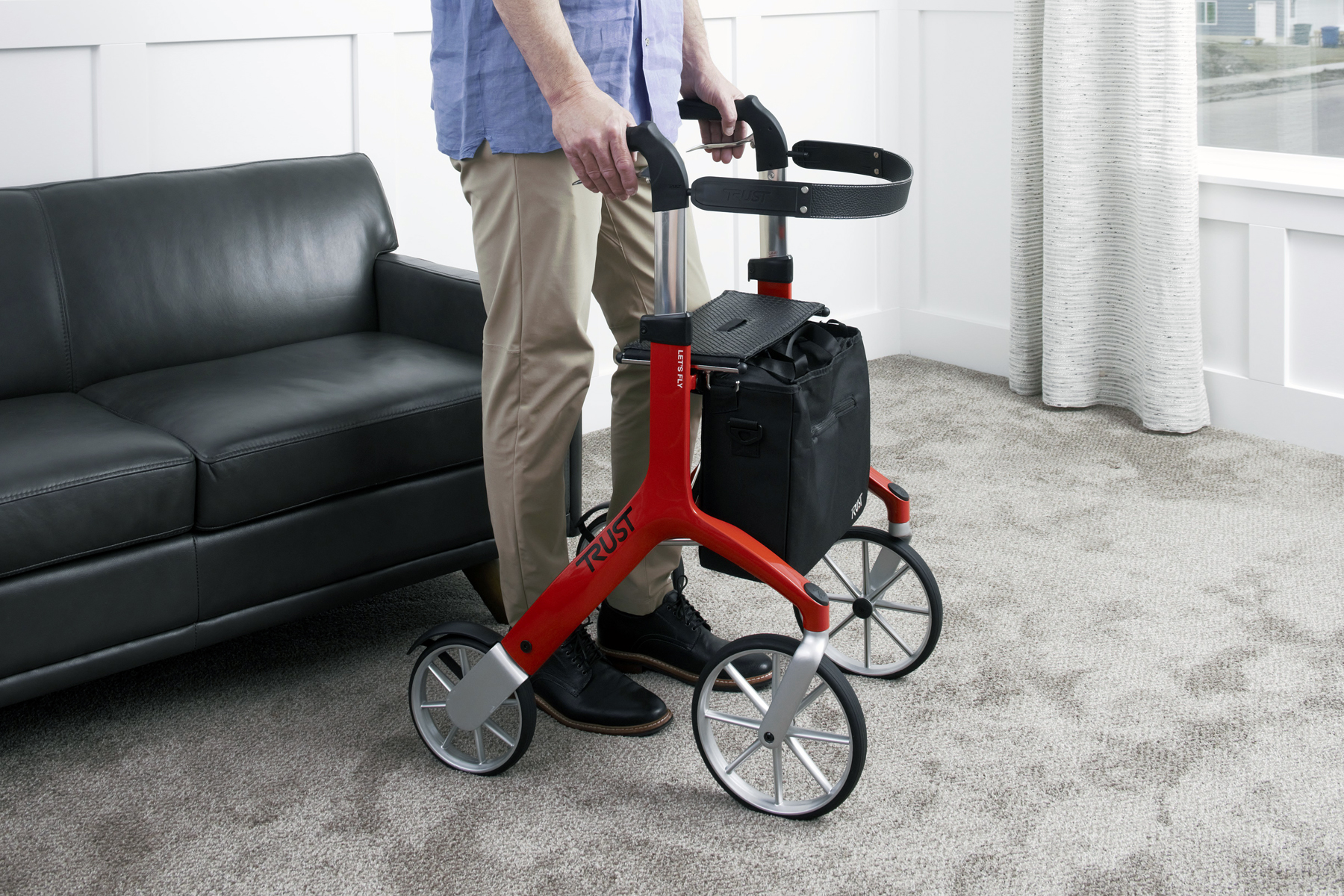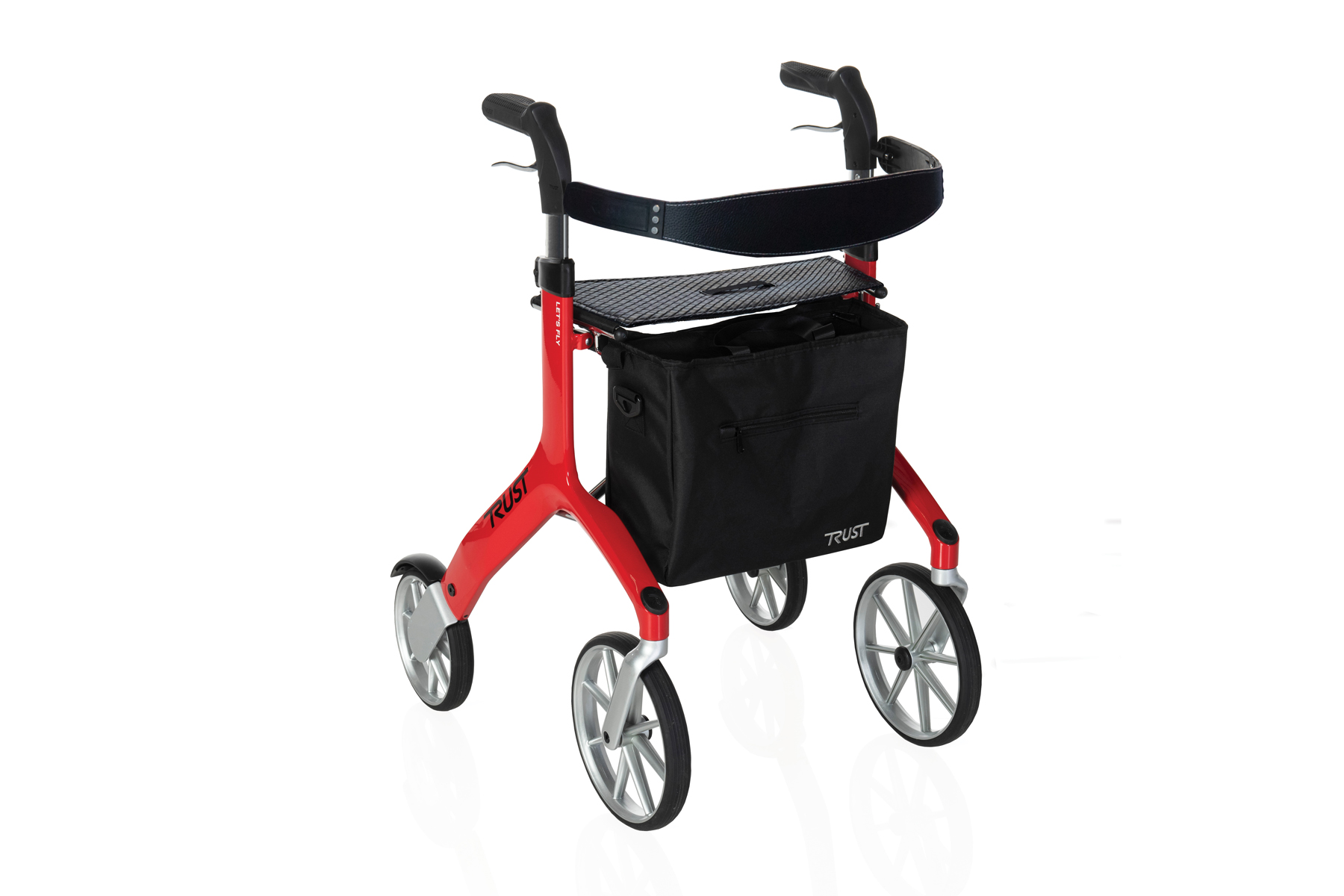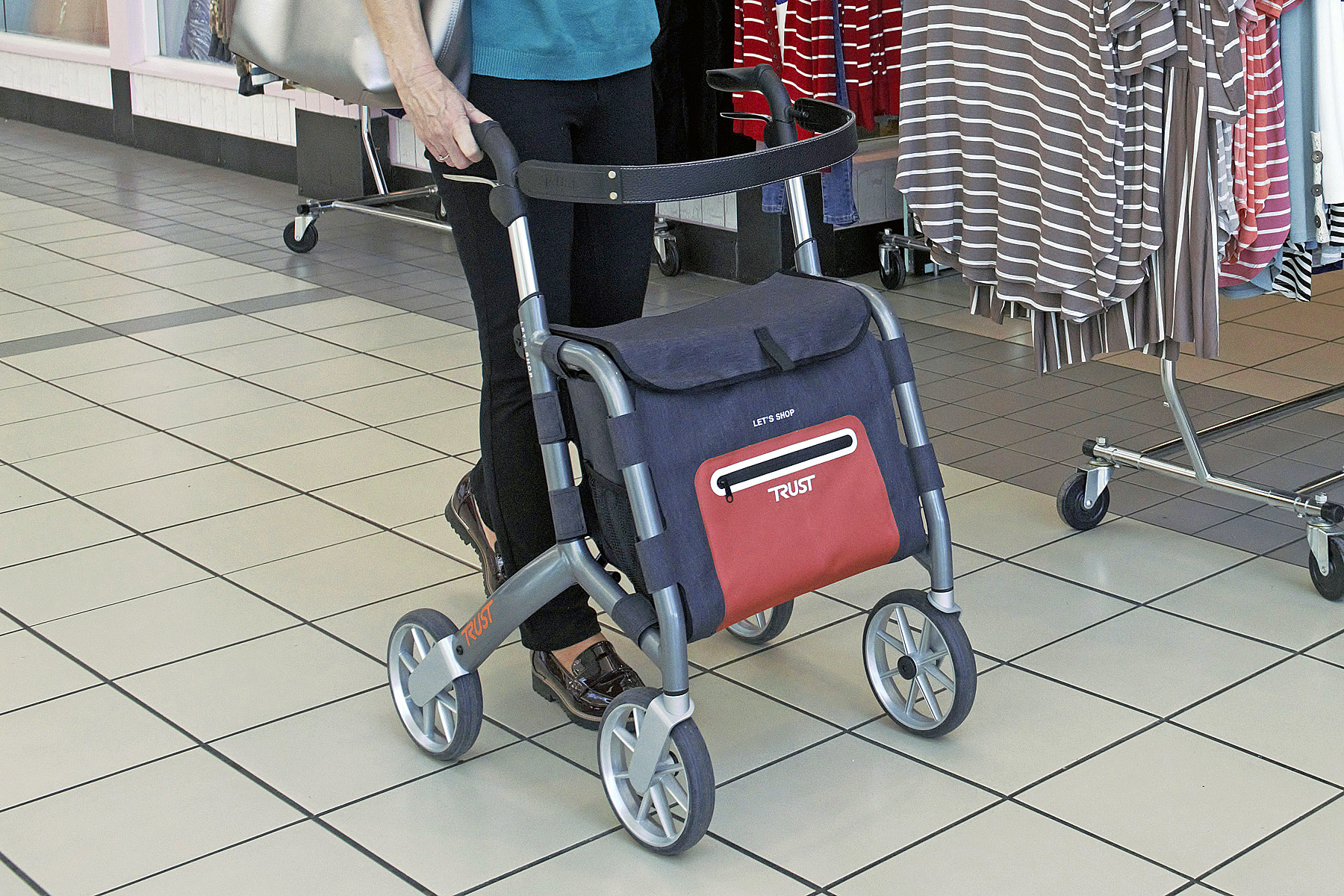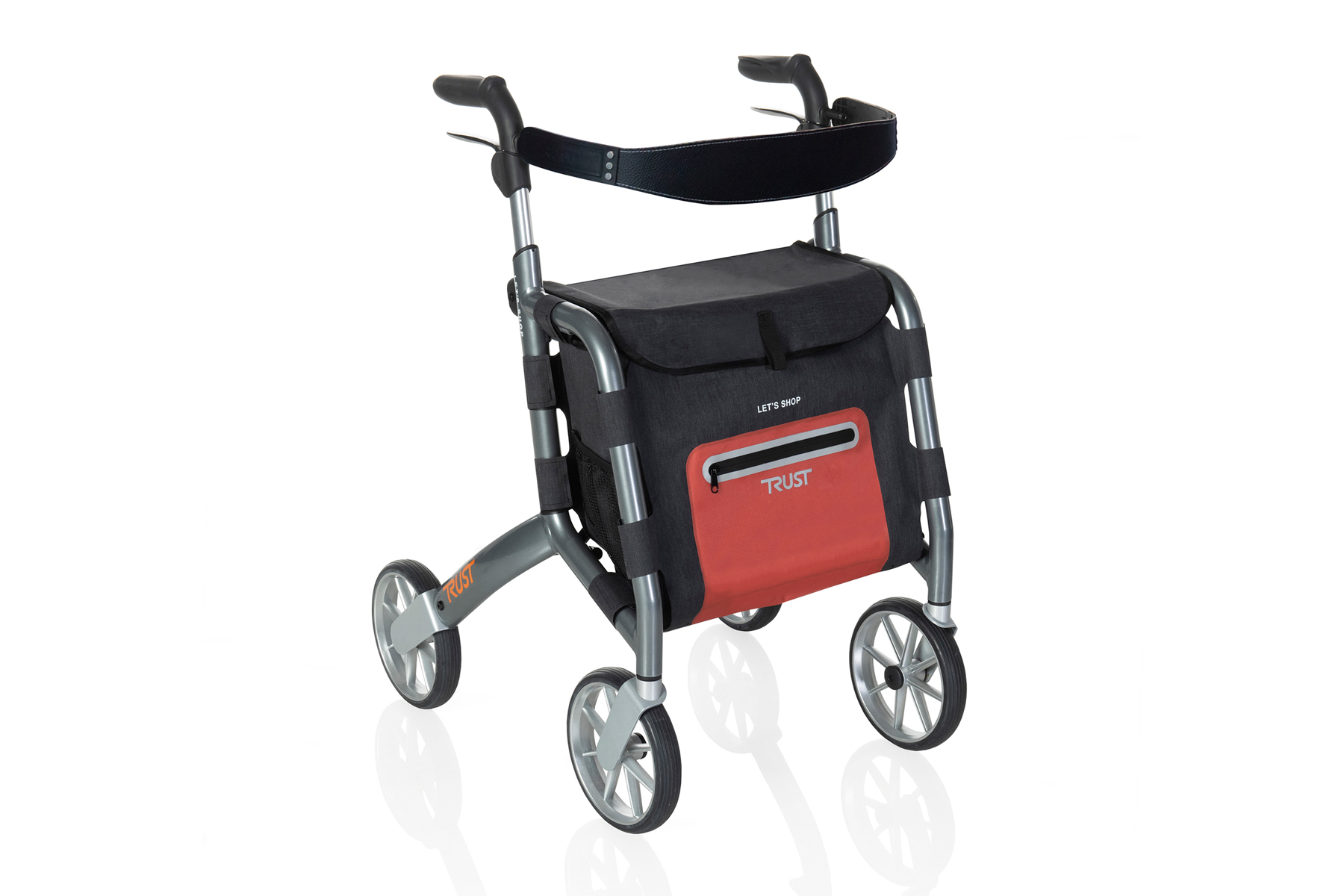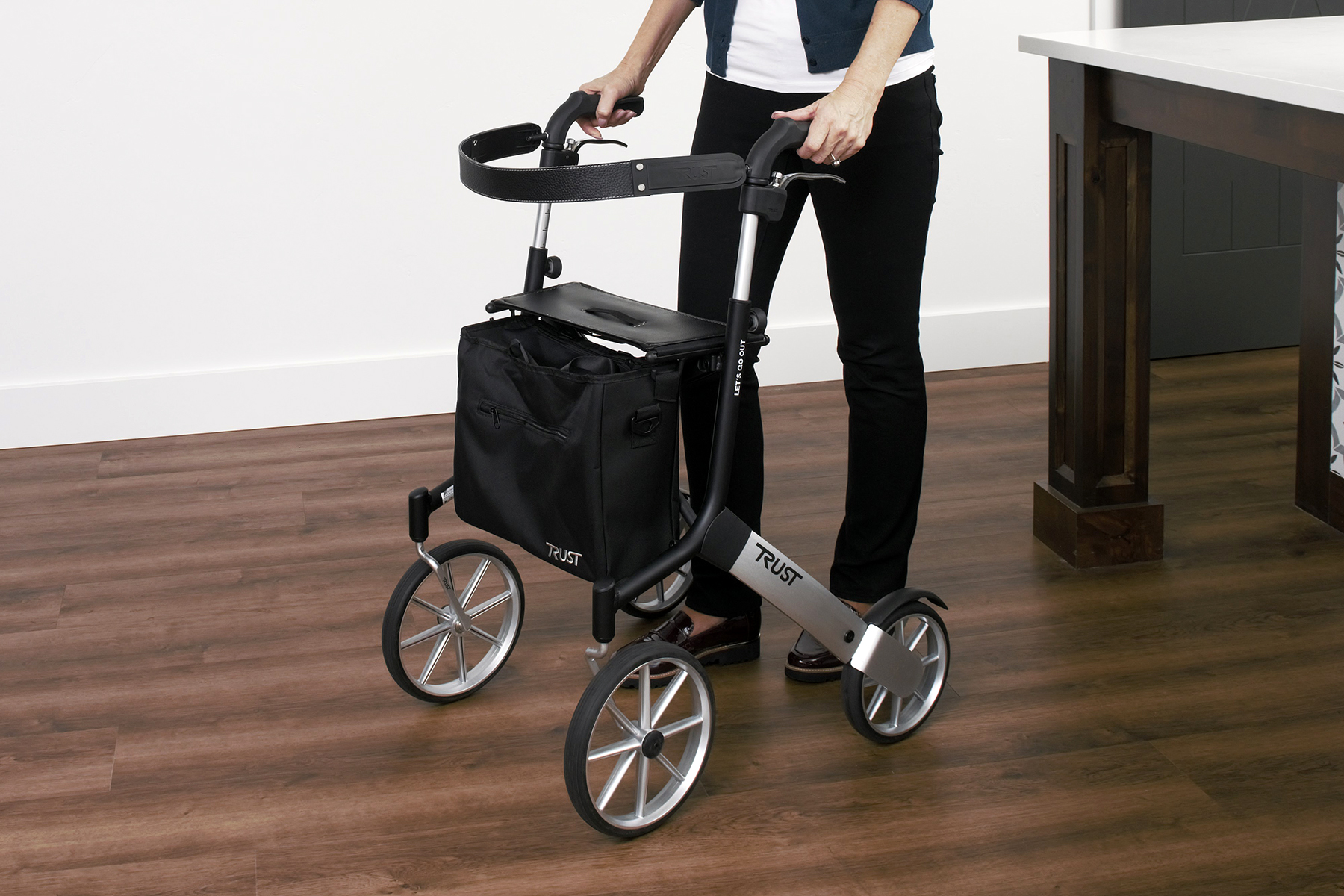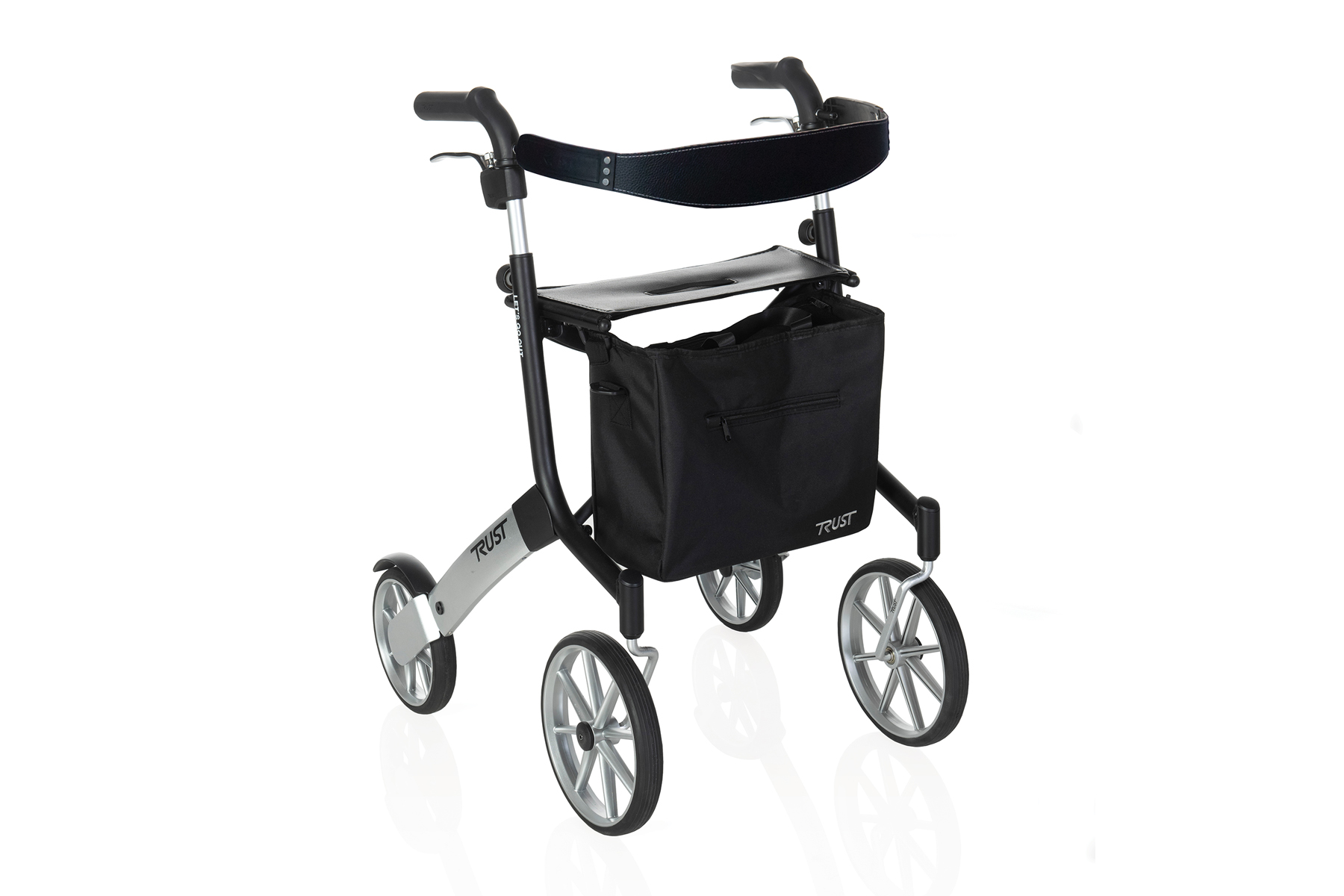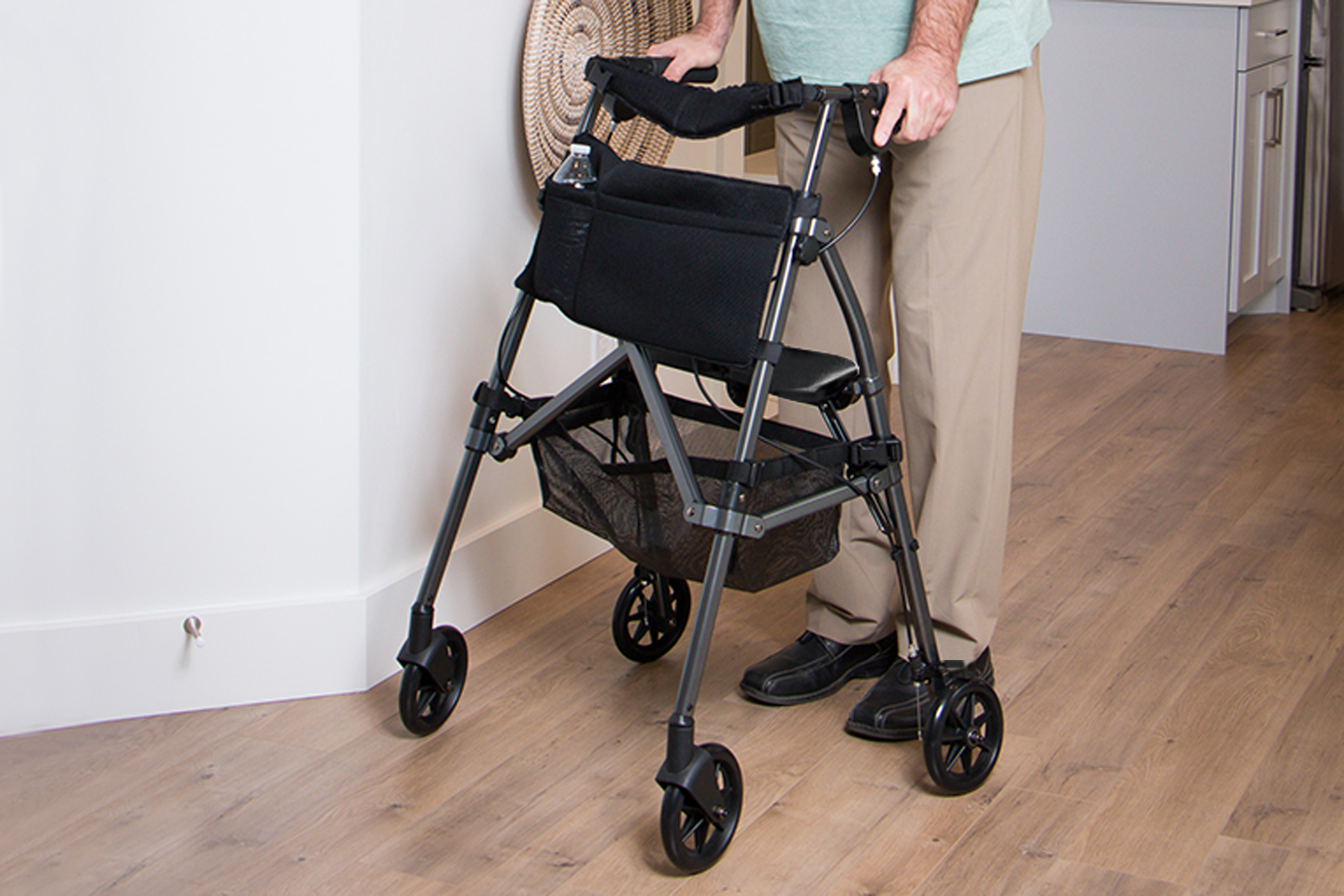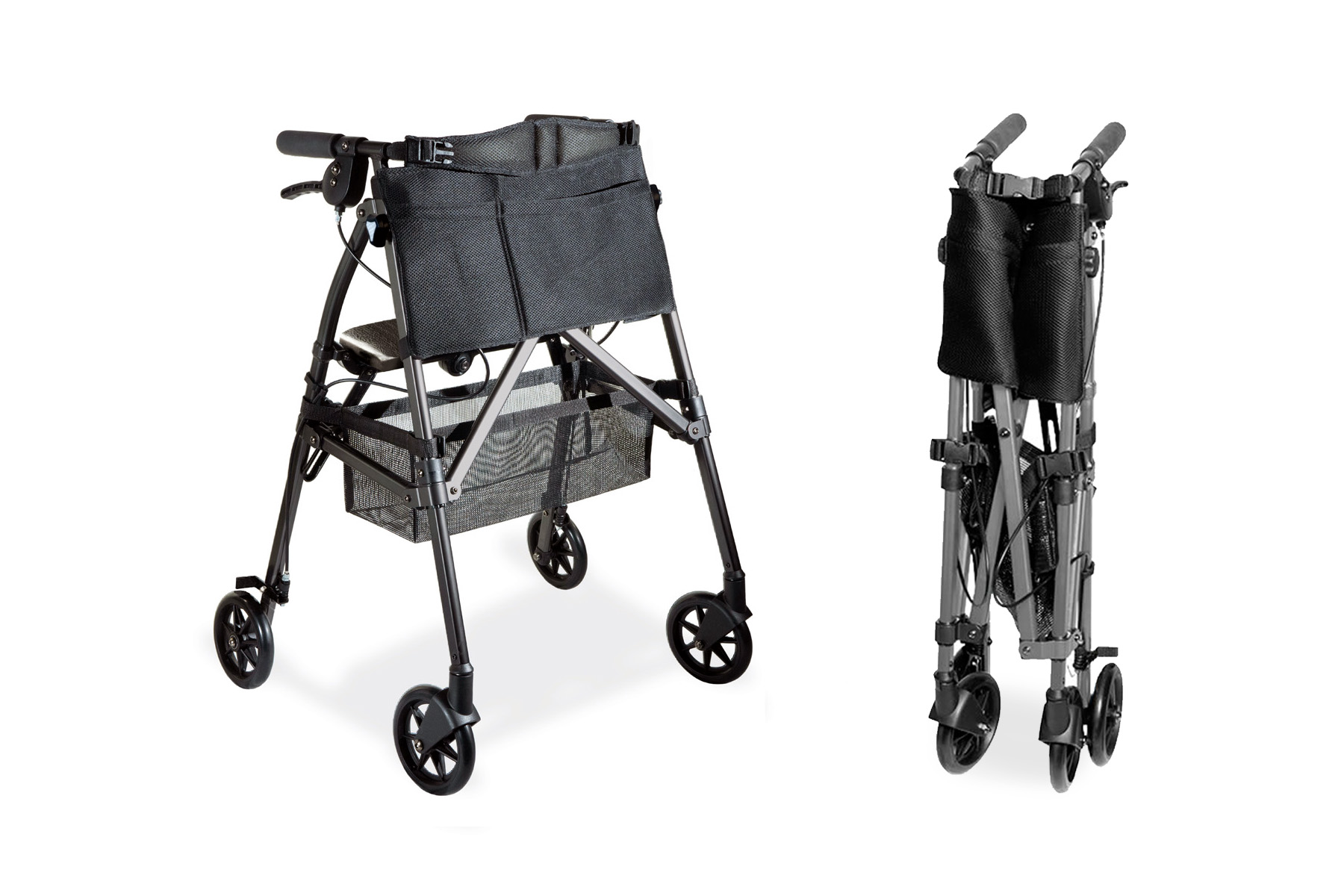Making the decision between a walker and a rollator can be an overwhelming one, especially when you consider that this option will significantly affect a senior’s daily lifestyle. While choosing between rollators and walkers may seem like a small issue compared to treatment options or medication schedules, it’s actually quite an important choice as these pieces of equipment quite literally serve as the scaffolding for any elderly person’s independence. So if you are considering helping your senior loved one obtain either of these devices, continue reading to learn more about how they work and how each could best suit their specific needs.
Subscribe to our Newsletter
Who can Benefit from Walking Aids
Individuals who can benefit from walkers or rollators span a wide range of age groups and health conditions. Primarily, they are used by the elderly or people with mobility issues due to age, injury, surgery, or a chronic condition like arthritis or Parkinson’s disease. Walkers and rollators are excellent for providing the additional support needed to prevent falls and maintain balance. They can also be beneficial for those recovering from surgery who may need temporary help with stability while they regain strength. Ultimately, anyone looking to maintain a level of independence and safety in their movements can benefit from the use of a walker or rollator.
Types of Walking Aids
There’s a broad spectrum of walking aids available, each designed with specific features to cater to varying needs. Before choosing a walker, it is crucial to assess the individual’s specific needs, including their stability, strength, and endurance levels, as well as their daily routines and the kind of terrain they frequently navigate. Careful evaluation ensures the chosen aid not only provides ample support and safety but also optimizes the user’s independence and quality of life.
With so many options available, it’s important to consult with a healthcare professional to determine the best type of walker or rollator for your specific needs.
What is a Walker?
A walker is a mobility device designed to assist individuals who have trouble walking independently. Walkers come in different forms, sizes, and materials, but the purpose is to provide support and stability for people with disabilities, injuries, or age-related conditions. Generally, walkers have four legs with rubber tips (and sometimes even tennis balls) that move forward as the user takes a step.
Walkers, unlike rollators, typically come without wheels like the Stander EZ Fold-N-Go Walker Lite. This design is intentional as the purpose of a walker is to provide maximum stability for individuals who have significant balance issues or a high risk of falling. The lack of wheels means the walker remains static until physically lifted and advanced by the user. As a result, the user can fully lean on the walker for support, making it an ideal choice for those who need to put a lot of weight on the device as they move. While this design may limit speed and fluidity of movement somewhat compared to a wheeled device, it offers a level of stability that is unmatched, making walkers an essential tool for those prioritizing safety and balance over mobility.
What is a Rollator?
Have you ever seen someone walking with a handy cart-like device that they push in front of them? You may have noticed that it has wheels and hand brakes. This is called a Rollator, a helpful mobility aid that can assist people with walking difficulties to move comfortably and safely. The Rollator is lightweight yet sturdy, with four or three wheels that make it easy to maneuver and transport. It comes with a built-in seat that can be utilized whenever the person needs to take a break. Rollators, like the EZ Fold-N-Go Rollator, have become more popular for people who enjoy getting around and staying active, but need a little extra support to keep them on their feet.
You may also hear the term “euro-style rollator” when discussing rollators. Euro-style refers to a type of rollator with four wheels in which the front wheels are larger in diameter than the two rear wheels. While offering a more unique and luxurious style, euro-style rollator wheels also accommodate more rough terrain and provide a more durable frame to help prevent falls. If this sounds like a good idea for you, check out our line of euro-style rollators by Trust Care.
What is a Hybrid Rolling Walker?
A hybrid rolling walker is a mobility aid that combines the stability and support of a traditional walker with the convenience and maneuverability of a rollator. These walkers typically have a sturdy frame, as well as two wheels for easier movement. Some hybrid models also have handbrakes or adjustable handles for added customization. Hybrid rolling walker, like the EZ Fold-N-Go Walker, is ideal for individuals who need the support of a walker, but also want the option to move more freely without having to lift the walker with each step. Overall, a hybrid rolling walker can be a comfortable and practical choice for those with limited mobility.
Prioritizing Stability vs. Mobility
When choosing a mobility aid, the decision should not be driven solely by ease of movement. While a four-wheel rollator offers greater mobility and independence, it may not be the best choice for everyone. The increased maneuverability of a four-wheel rollator, while beneficial for some, can be a potential safety concern for those with significant balance issues or a high risk of falling. The wheels, meant to facilitate movement, can make the rollator roll away, causing the user to lose balance and fall.
Non-wheeled walkers, on the other hand, provide the highest level of stability among walking aids. They stay firmly in place and only move when intentionally lifted by the user. This makes them an excellent choice for individuals who need to lean heavily on the walker for support or who have severe balance issues. Non-wheeled walkers may also be more suitable for those recovering from major surgeries who need a sturdy and secure support system during the rehabilitation process, but may not provide the same mobility desired by others.
In essence, the choice between a rollator and a non-wheeled walker should be dictated by the user’s specific needs and limitations. It’s important to consult with a healthcare professional to get personalized advice and make an informed decision that ensures safety, enhances mobility, and promotes the highest possible quality of life.
Factors to Consider when Choosing a Walker or Rollator
Choosing a walker or rollator can be a daunting task, but considering certain factors can make the process easier and ensure that you find the perfect fit for your needs. As discussed already, among the chief considerations when choosing a walking aid is the level of stability needed weighed against the level of mobility required. Here are a few other considerations to make before purchasing:
Weight Capacity and Stability Requirements
When it comes to weight capacity and stability requirements, it’s important to prioritize safety and quality. All walkers come with an advertised weight capacity. If extra support is needed, consider a bariatric rollator, like the Stander EZ Fold-N-Go Rollator HD. Bariatric rollators typically have a weight capacity up to 500 pounds and come with a wider seat. Keep in mind that due to the increased sturdiness of a bariatric rollators, these walking aids can be heavier and bulkier than traditional walkers.
It’s also important to consider factors such as the center of gravity and potential stresses that may be put on the item. By carefully assessing the weight and stability requirements, you can confidently select or design a product that meets the necessary standards for your specific needs.
Lightweight and Compact Walkers
There are many scenarios where one might prefer a lightweight and compact walker over the traditional heavier types. These are particularly beneficial for individuals who frequent outdoor activities, have regular travel plans, or live in a space-constrained environment.
Lightweight walkers are often made of aluminum, making them significantly lighter than the standard steel walkers, without compromising on strength and support. This makes them easy to lift, which is especially useful when navigating stairs, getting into and out of vehicles, or crossing uneven terrains.
Compact walkers are designed to fold easily, making them highly portable and easy to store. This is a huge advantage for those who travel frequently or have limited storage space at home. With a compact walker, one can maintain their mobility and independence anywhere they go.
Compared to traditional walkers, lightweight and compact walkers are more user-friendly, especially for petite or weak individuals who might struggle with a heavy device. While they usually offer the same stability and safety as their heavier counterparts, they add the added conveniences of easy transportability and storage.
Cost Considerations and Insurance Coverage Options
When choosing a walker or rollator, it’s vital to consider the cost and how insurance may factor into this equation. Many basic walkers are covered partially or fully by health insurance or Medicare, as they are often recognized as necessary medical devices. However, it’s important to understand that insurance typically only covers the cost of basic equipment like a traditional two-button fold walker — often the bare minimum required for improved mobility.
For those seeking high-end walkers or rollators with additional features, such as lightweight materials, compact folding mechanisms, or extra comfort options, these costs will likely be covered out-of-pocket as they often exceed the price of what insurance will cover. Typically, insurance companies don’t cover these “luxury” features, viewing them as beyond what is medically necessary.
Therefore, while it’s possible to have the cost of a basic walker offset by insurance, anyone who wants a higher-end model with advanced features should be prepared to cover the difference. It’s a good idea to discuss these details with your insurance provider first to understand what’s covered and what additional costs you may need to budget for.
Tips on Using Walker or Rollator Properly
When using a walker or rollator, it’s important to use it properly for your safety and comfort. First and foremost, make sure the height of the device is adjusted to your height. It should be at a comfortable height so you can easily grip the handles without bending over or hunching your shoulders. As a general rule, you should adjust the walker height to be at wrist height as you let your arms hang naturally to the side. This will allow for a slight bend in the elbow when gripping the walker.
Many individuals wish to use walkers with their arms at 90 degree angles, allowing their forearms to rest on the handles as they walk. Keep in mind that most walkers and rollators are not intended for use in such a way. Upright walkers have become popular to satisfy this need. However, please keep in mind that walking in such a way can contribute to poor posture and back pain.
When walking, it is best to maintain an upright posture and keep the device close to your body. Avoid leaning forward or pushing the walker too far ahead of you. Remember to take small steps and keep the walker or rollator in front of you at all times to prevent tripping hazards. By following these tips, you can confidently and safely use a walker or rollator as a helpful mobility aid.
Handles should be adjusted to allow for a slight bend in the elbow
The Bottom Line
Choosing between a walker or rollator can be a crucial decision for those who need assistance with mobility. The primary factor to consider is the level of support required. A walker offers stable support for those who need help with balance, while a rollator is more suitable for individuals who require more significant assistance with walking and stability. Additionally, the terrain of the environment where the walker or rollator will be used should be taken into account. Rollators equipped with sturdy wheels and brakes are perfect for rough terrains, while walkers with non-marking and non-skid tips suffice for smooth terrains. Ultimately, it’s essential to consult a healthcare professional who can provide expert guidance on choosing the device that best suits one’s needs.
At the end of the day, selecting a walker or rollator comes down to individual needs. Both mobility aids provide distinct advantages – walkers are lightweight and cost-effective whereas rollators offer more stability and better maneuverability in tight spaces. But what’s most important is that you choose a device that fits your personal lifestyle, budget, and level of ability. To improve overall safety and satisfaction with your chosen device, it is paramount to learn how to use it properly. And by following the tips outlined above, you can navigate any terrain with ease and confidence! For additional help answering any questions you may have before selecting a mobility aid for yourself or someone special, reach out to one of our knowledgeable customer service representatives today or seek the assistance of a physical therapist.

